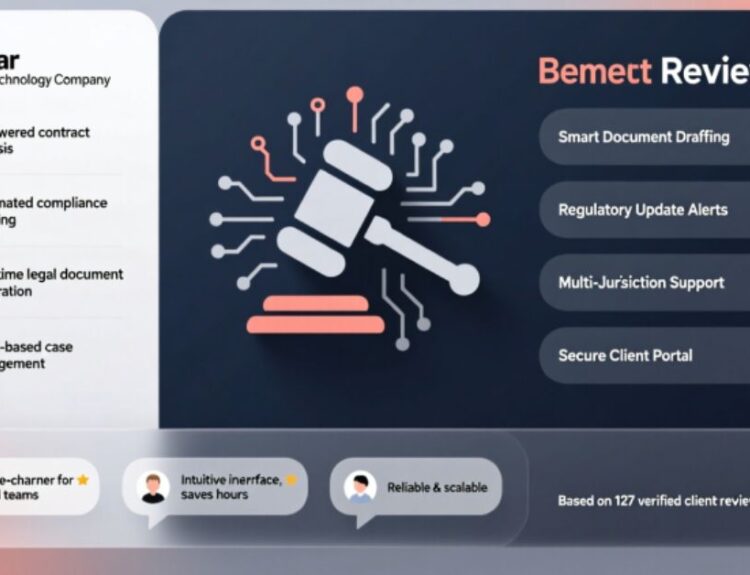Technology moves at a break‑neck speed, and each year brings a fresh set of innovations that ripple across every industry. For anyone who wants to stay ahead—whether you’re a startup founder, a corporate strategist, or simply a tech‑curious individual—understanding the major trends in technology is no longer optional; it’s essential. In this guide we’ll unpack the most influential forces shaping 2025, illustrate how they interconnect, and provide practical takeaways you can apply today.
1. Artificial Intelligence Becomes a Business Core
Artificial Intelligence (AI) has graduated from a “nice‑to‑have” experiment to a core operating system for many enterprises. Companies now embed AI into everything from product design to customer support, creating a feedback loop where data fuels smarter models, and smarter models generate richer data.
How AI is Changing the Landscape
- Generative AI for Content Creation – Tools such as large language models (LLMs) and diffusion‑based image generators enable marketers to produce copy, videos, and graphics at a fraction of the time and cost.
- AI‑Powered Decision Engines – Predictive analytics platforms ingest real‑time data streams, allowing supply‑chain managers to anticipate demand spikes before they happen.
- Intelligent Automation (Hyper‑Automation) – Robotic Process Automation (RPA) combined with AI (often called “intelligent automation”) can handle complex, rule‑based tasks that previously required human judgment, such as claims processing in insurance.
These applications illustrate why the major trends in technology list always places AI at the top: it is the catalyst that amplifies the impact of every other trend.
2. The Rise of Edge Computing and 5G/6G Connectivity
While cloud data centers remain vital, the edge—the point where data is generated—has become a strategic asset. Edge computing reduces latency, conserves bandwidth, and enhances privacy by processing information locally.
Why Edge Matters
- Real‑Time Responsiveness – Autonomous vehicles, industrial robots, and AR/VR experiences demand millisecond‑level reaction times that only edge nodes can guarantee.
- Bandwidth Efficiency – By filtering and aggregating data at the source, edge reduces the volume sent to the cloud, cutting costs and easing network congestion.
- Data Sovereignty – Regulations such as GDPR and emerging data‑localization laws push organizations to keep sensitive data within national borders, a task that edge architectures simplify.
The rollout of 5G networks—and early trials of 6G—provides the ultra‑high‑speed, low‑latency backbone needed for edge ecosystems to flourish. Together, they form a symbiotic relationship that is a cornerstone of the major trends in technology for the coming years.
3. Quantum Computing Moves Toward Practicality
Quantum computers are no longer confined to research labs. In 2024, several cloud providers launched quantum‑as‑a‑service (QaaS) platforms, allowing developers to experiment with quantum algorithms without owning a physical quantum processor.
Real‑World Use Cases Emerging
- Drug Discovery – Quantum simulations can model molecular interactions with unprecedented accuracy, shortening the time to identify viable compounds.
- Optimization Problems – Logistics firms are testing quantum annealers to solve route‑planning challenges that are intractable for classical computers.
- Cryptography – The looming threat of quantum‑capable adversaries is prompting a shift toward post‑quantum cryptographic standards, a trend that will reshape security protocols across the internet.
Although still in its infancy, quantum computing’s trajectory is unmistakable, and its influence will ripple through AI, cybersecurity, and materials science—making it a pivotal entry on the list of major trends in technology.
4. Sustainable Tech and Green Computing
Environmental concerns have moved from corporate social responsibility to a strategic imperative. Technology companies are now judged on carbon footprints, energy efficiency, and circular‑economy practices.
Key Pillars of Sustainable Tech
- Energy‑Efficient Hardware – ARM‑based processors and low‑power GPUs reduce data‑center consumption by up to 30 % compared with legacy x86 chips.
- Renewable‑Powered Cloud – Major cloud providers pledge to run their global infrastructure on 100 % renewable energy by 2030, encouraging customers to adopt greener workloads.
- E‑Waste Management – Programs that refurbish, recycle, or repurpose end‑of‑life devices are gaining traction, turning waste streams into revenue sources.
Sustainability is not a side trend; it is a major trend in technology that influences product design, procurement policies, and even investor decisions.
5. Immersive Experiences: AR, VR, and the Metaverse
The convergence of high‑resolution displays, powerful graphics processing, and low‑latency networks has revived interest in immersive technologies. While the term “metaverse” has become buzz‑laden, concrete applications are emerging in training, retail, and remote collaboration.
Practical Deployments
- Enterprise Training Simulations – Manufacturing firms use VR to train operators on hazardous equipment without risking safety.
- Virtual Showrooms – Retailers let customers try on clothing or preview furniture in their homes via AR, boosting conversion rates.
- Hybrid Meetings – Mixed‑reality meeting rooms blend physical and digital participants, creating a sense of presence that traditional video calls lack.
These immersive tools are increasingly integrated with AI (for natural language interaction) and edge computing (for real‑time rendering), reinforcing their place among the major trends in technology.
6. Decentralized Finance (DeFi) and Blockchain Evolution
Blockchain technology has matured beyond cryptocurrency speculation. Decentralized finance (DeFi) platforms now offer lending, insurance, and asset‑tokenization services that rival traditional financial institutions.
Evolution Highlights
- Interoperability Bridges – New protocols enable assets to move seamlessly across different blockchains, fostering a more connected ecosystem.
- Regulatory Frameworks – Governments worldwide are drafting clear guidelines, which, while adding compliance overhead, also bring legitimacy to DeFi products.
- Enterprise Adoption – Companies are piloting blockchain for supply‑chain traceability, intellectual‑property rights, and secure identity management.
The continued growth of blockchain and DeFi underscores their status as a major trend in technology that reshapes trust, ownership, and value transfer.
7. HealthTech and Bio‑Digital Convergence
The pandemic accelerated digital health adoption, and the momentum has not slowed. Wearables, telemedicine platforms, and AI‑driven diagnostics are now mainstream components of modern healthcare.
Notable Innovations
- Remote Patient Monitoring (RPM) – Continuous glucose monitors, cardiac patches, and smart inhalers transmit data to clinicians in real time, enabling proactive care.
- AI‑Assisted Imaging – Deep‑learning models detect anomalies in X‑rays and MRIs with accuracy rivaling radiologists, speeding up diagnosis.
- Personalized Medicine – Genomic sequencing combined with AI predicts drug response, allowing clinicians to tailor treatments to individual patients.
HealthTech’s integration with AI, edge, and data‑privacy technologies makes it a linchpin of the major trends in technology landscape.
Comparative Table: How the Top Trends Interact
| Trend | Core Benefit | Primary Enablers | Key Industries Impacted | Example Use‑Case |
|---|---|---|---|---|
| Artificial Intelligence | Decision automation & insight generation | GPUs, LLMs, data lakes | All sectors (finance, retail, manufacturing) | AI‑driven demand forecasting |
| Edge Computing + 5G/6G | Low‑latency processing & bandwidth savings | Edge nodes, millimeter‑wave spectrum | Automotive, IoT, AR/VR | Real‑time traffic management for autonomous cars |
| Quantum Computing | Solving classically intractable problems | Qubits, quantum annealers, QaaS | Pharma, logistics, cybersecurity | Quantum‑based molecular simulation for drug discovery |
| Sustainable Tech | Reduced carbon footprint & cost | ARM chips, renewable energy, circular design | Data centers, consumer electronics | Cloud provider powered by 100 % wind energy |
| Immersive Experiences | Enhanced engagement & training | High‑refresh displays, spatial audio, low‑latency networks | Retail, education, enterprise | VR safety training for oil‑rig workers |
| DeFi & Blockchain | Trustless transactions & tokenization | Smart contracts, interoperable bridges | Finance, supply chain, legal | Tokenized real‑estate ownership platform |
| HealthTech | Remote care & precision medicine | Wearables, AI diagnostics, secure data exchange | Healthcare, wellness, insurance | AI‑assisted ECG analysis via a smartwatch |
The table demonstrates that these major trends in technology are not isolated silos; they reinforce each other, creating a synergistic ecosystem that accelerates overall digital transformation.
ALSO READ THIS POST:
Practical Steps to Leverage These Trends
- Audit Your Data Landscape – Identify where data resides, its quality, and how it can feed AI models or edge analytics.
- Pilot Edge Solutions – Start with a low‑risk use case, such as local video analytics for security cameras, to experience latency benefits.
- Explore Quantum‑Ready Algorithms – Even if you don’t own a quantum computer, redesigning certain optimization problems for future quantum execution can give you a head start.
- Adopt Green IT Policies – Shift to energy‑efficient hardware, enable power‑saving modes, and consider renewable‑energy contracts for your data centers.
- Invest in Skill Development – Upskill teams in AI/ML, blockchain development, and immersive design to stay competitive.
By taking incremental, measurable actions, organizations can turn the major trends in technology from abstract concepts into tangible business value.
ALSO READ THIS POST: Kaiser Permanente Jobs in Baldwin Park: 2025 Guide
Frequently Asked Questions (FAQs)
How can small businesses benefit from AI without a large data science team?
Small businesses can leverage pre‑built AI services (e.g., AI‑powered chatbots, sentiment analysis APIs, and automated marketing platforms) that require minimal configuration. These SaaS solutions handle model training and scaling, allowing businesses to focus on integration and outcome measurement.Z
What security challenges arise when moving workloads to the edge?
Edge environments expand the attack surface because devices are often physically accessible and may run on less hardened operating systems. Key challenges include secure boot, device authentication, encrypted data transmission, and regular firmware updates. Implementing zero‑trust architectures and hardware‑based security modules mitigates many of these risks.
Is quantum computing ready for commercial use, or is it still experimental?
Quantum computing is transitioning from experimental to early‑adoption phases. While full‑scale, fault‑tolerant quantum computers are not yet mainstream, quantum‑as‑a‑service platforms enable developers to experiment with quantum algorithms for specific problems such as optimization and chemistry simulations.
How does blockchain improve supply‑chain transparency beyond cryptocurrency?
Blockchain provides an immutable ledger where each transaction or handoff can be recorded with timestamps and digital signatures. In supply chains, this enables stakeholders to verify provenance, detect counterfeit goods, and automate compliance checks through smart contracts, thereby increasing trust and efficiency.
What are the environmental trade‑offs of deploying massive AI models?
Training large AI models consumes significant electricity, often sourced from non‑renewable grids, leading to high carbon emissions. However, techniques such as model pruning, quantization, and using specialized AI accelerators can reduce energy usage. Additionally, moving inference to edge devices can lower data‑center load, further decreasing the overall environmental impact.
Conclusion
The major trends in technology—AI, edge computing, quantum breakthroughs, sustainable tech, immersive experiences, decentralized finance, and HealthTech—are converging to reshape how we work, live, and interact. By understanding each trend’s core benefits, recognizing their interdependencies, and taking concrete steps to adopt them, you position yourself or your organization at the forefront of the digital revolution. Stay curious, stay agile, and let these trends guide you toward a smarter, greener, and more connected future.





